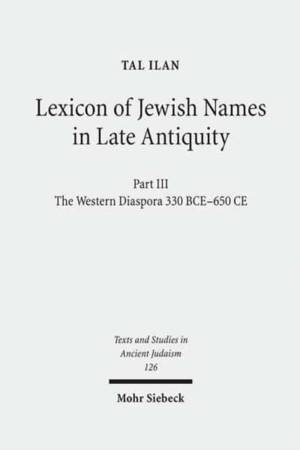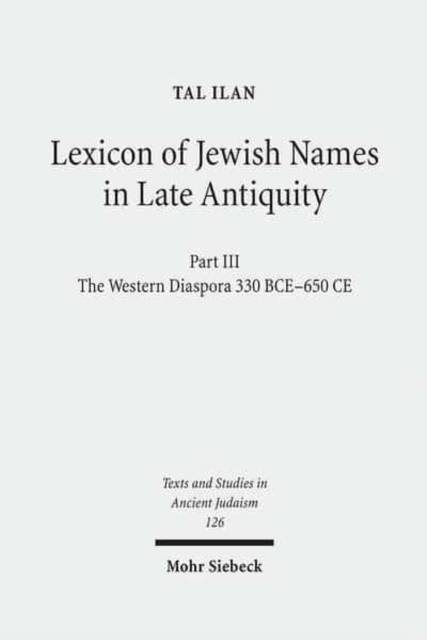
- Afhalen na 1 uur in een winkel met voorraad
- Gratis thuislevering in België vanaf € 30
- Ruim aanbod met 7 miljoen producten
- Afhalen na 1 uur in een winkel met voorraad
- Gratis thuislevering in België vanaf € 30
- Ruim aanbod met 7 miljoen producten
Zoeken
Lexicon of Jewish Names in Late Antiquity
Part III: The Western Diaspora, 330 Bce - 650 Ce
Tal Ilan
Hardcover | Engels | Texte und Studien zum Antiken Judentum / Texts and Studies in Ancient Judaism TSAJ | nr. 126
€ 267,45
+ 534 punten
Uitvoering
Omschrijving
In this lexicon, Tal Ilan collects all the information on names of Jews in lands west of Palestine, in which Greek and Latin was spoken, and on the people who bore them between 330 BCE and 650 CE. The corpus includes names from literary sources, but those mentioned in epigraphic and papyrological documents form the vast majority of the database. Tal Ilan discusses the provenance of the names and explains them etymologically, given the many possible sources of influence for the names at that time. In addition she shows the division between the use of biblical names and the use of Greek, Latin and other foreign names, and points out the most popular names.The lexicon is accompanied by a lengthy and comprehensive introduction that scrutinizes the main trends in name giving current at the time. A large part of it is devoted to the question of how one can identify a Jew in a mostly non-Jewish society.
Specificaties
Betrokkenen
- Auteur(s):
- Uitgeverij:
Inhoud
- Aantal bladzijden:
- 770
- Taal:
- Engels
- Reeks:
- Reeksnummer:
- nr. 126
Eigenschappen
- Productcode (EAN):
- 9783161496738
- Verschijningsdatum:
- 1/02/2009
- Uitvoering:
- Hardcover
- Formaat:
- Genaaid
- Afmetingen:
- 153 mm x 229 mm
- Gewicht:
- 1324 g

Alleen bij Standaard Boekhandel
+ 534 punten op je klantenkaart van Standaard Boekhandel
Beoordelingen
We publiceren alleen reviews die voldoen aan de voorwaarden voor reviews. Bekijk onze voorwaarden voor reviews.











